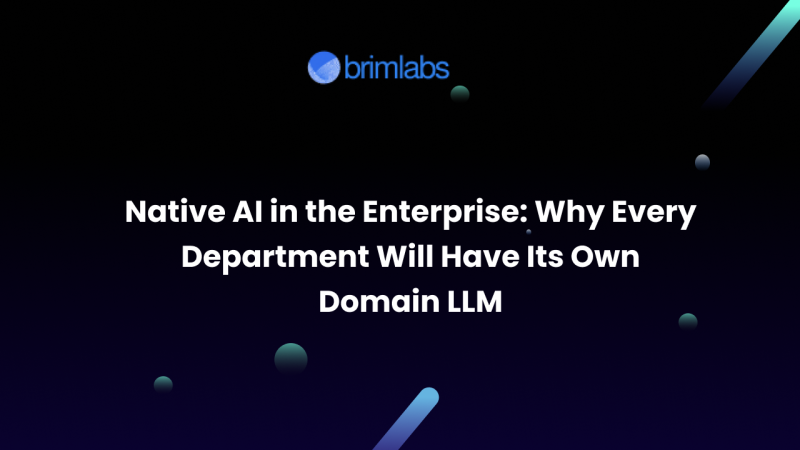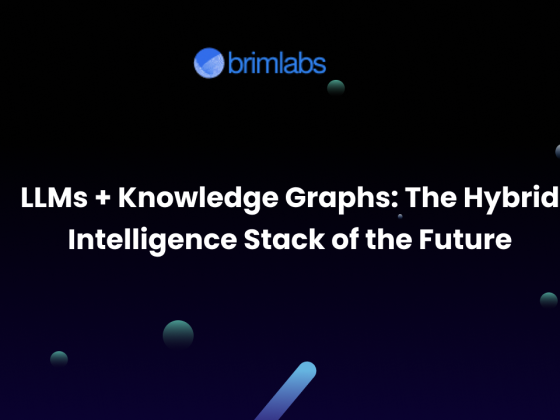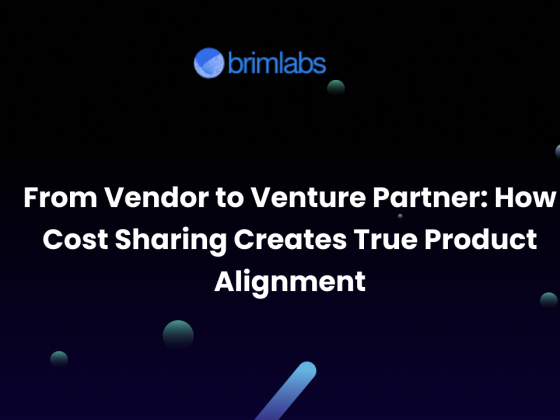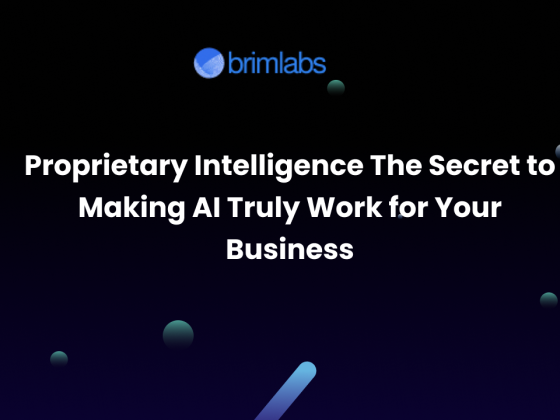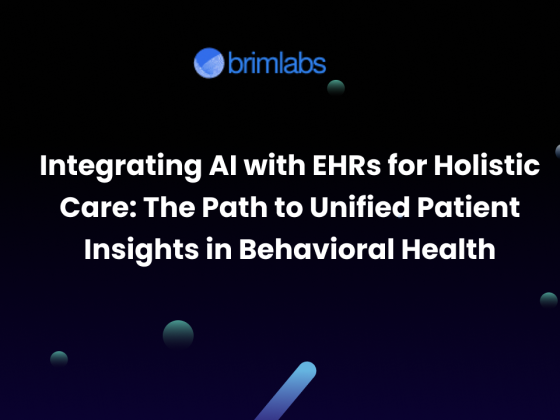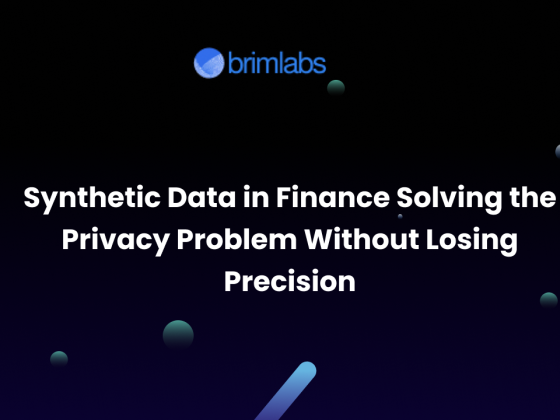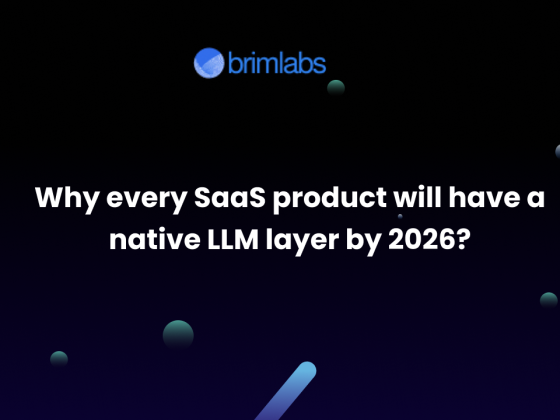The enterprise world is entering an era where artificial intelligence is no longer a single tool sitting in the IT department. It is becoming the invisible operating system of every business function. The next decade will not be defined by a single large model serving the entire company but by multiple domain-specific LLMs tailored to individual departments: finance, marketing, HR, legal, operations, and beyond. This decentralization of intelligence marks the rise of native AI in the enterprise.
From Centralized AI to Native AI Ecosystems
The first wave of enterprise AI revolved around shared infrastructure. A single data science or AI team served all departments, creating predictive models, dashboards, and automation workflows. This model worked when the focus was on analytics. But as AI evolved into generative and decision-support systems, its reach extended far beyond analytics into judgment, reasoning, and knowledge creation.
Today, each department has unique data streams, workflows, and decision contexts. The finance team deals with reconciliations and forecasting; HR manages sensitive employee data and compliance; marketing crafts brand narratives across millions of micro-moments; and customer support handles contextual, high-stakes conversations daily. A single, generic AI system cannot excel across all these domains.
This realization has led to the emergence of native AI models embedded within each department’s ecosystem, fine-tuned on domain data, and integrated directly into its decision and workflow layers.
Why the Monolithic AI Model Fails in Enterprises
- Context Dilution: A universal model trained on all departments’ data risks losing precision. A support conversation model should not be confused by finance terminologies or legal jargon.
- Compliance and Security: Different departments have distinct data compliance frameworks, HR follows GDPR and HIPAA; finance adheres to SOX or PCI-DSS. Centralized models create unnecessary exposure risks.
- Latency and Bottlenecks: Central AI pipelines force all teams to depend on a single engineering bottleneck, delaying innovation and customization.
- Ownership and Trust: Departmental heads demand explainable, transparent AI tools that they can control and refine. A shared black-box model does not build confidence at the departmental level.
The new approach decentralizes AI intelligence into Domain LLMs, specialized models that speak the native language of each department while remaining interoperable across the enterprise.
Anatomy of a Domain LLM
A Domain LLM is not a brand-new foundation model built from scratch. It is typically a fine-tuned or augmented version of a general-purpose base model (like GPT-4, Claude, or Gemini) customized with proprietary data, internal documents, and process rules. The goal is to blend the linguistic fluency of large models with the factual accuracy and compliance of enterprise data.
Key components include:
- Private Data Layer: Vector databases containing department-specific knowledge, documents, and historical records.
- RAG: Ensures the model retrieves relevant context from trusted internal sources before generating any output.
- Guardrails and Policies: Governance frameworks to maintain tone, compliance, and role-based access.
- Feedback Loops: Continuous improvement based on user interactions, approval ratings, and corrections.
- Integration APIs: Embedding into existing enterprise systems like Salesforce, SAP, Workday, or Jira.
Department-Wise AI Evolution
1. Finance and Accounting
Finance departments are rapidly adopting AI for anomaly detection, ledger reconciliation, and predictive forecasting. A Domain LLM trained on internal financial statements, ERP data, and compliance frameworks can automatically:
- Generate quarterly summaries and variance analyses.
- Flag potential compliance risks or reporting inconsistencies.
- Simulate what-if scenarios for cash flow and budget allocations.
These models improve audit readiness and shorten financial close cycles by over 50 percent.
2. Human Resources
HR Domain LLMs revolutionize hiring, onboarding, and retention. Fine-tuned on internal HR policies, performance reviews, and job descriptions, they can:
- Draft role-specific job posts automatically.
- Summarize employee feedback for cultural insights.
- Generate tailored learning paths and career progression plans.
- Manage compliance around diversity, pay equity, and local labor laws.
With privacy-preserving mechanisms, HR teams can finally operationalize their data without breaching confidentiality.
3. Marketing and Sales
Marketing teams are already some of the biggest beneficiaries of AI. A marketing LLM can analyze brand tone, competitive data, and campaign history to:
- Generate audience-segmented ad copy and creative briefs.
- Predict which content formats will perform best.
- Correlate customer feedback with sentiment and conversion metrics.
Sales departments, powered by CRM-linked Domain LLMs, can craft personalized outreach messages, summarize client interactions, and recommend follow-up actions that drive deal closures.
4. Legal and Compliance
Legal Domain LLMs serve as intelligent paralegals. Trained on contract templates, regulatory filings, and compliance manuals, they can:
- Summarize clauses, flag deviations, and recommend standard language.
- Generate jurisdiction-specific agreements.
- Cross-reference new regulations with existing documentation to ensure compliance.
These models drastically reduce the time spent on document review and contract creation, freeing attorneys for higher-value work.
5. Customer Support and Operations
Customer support teams already rely on chatbots, but Domain LLMs elevate them into intelligent assistants capable of understanding context across tickets, product manuals, and FAQs. They can:
- Suggest solutions based on prior resolution patterns.
- Generate customer summaries with emotional sentiment.
- Predict escalation risk based on communication tone.
Operations teams, on the other hand, can integrate LLMs into logistics systems to forecast delays, optimize routing, or automatically generate SOP documentation.
The Enterprise AI Stack of the Future
Instead of one central AI team managing everything, enterprises will move toward an AI mesh architecture, an interconnected web of domain-specific models that communicate through a governance layer. This ensures both autonomy and alignment.
- Foundation Models: General-purpose models that provide linguistic and reasoning capabilities.
- Domain LLMs: Department-level models fine-tuned for context, data, and compliance.
- Governance Layer: Ensures consistency, data lineage, and security controls.
- Integration Layer: Connects AI services with enterprise applications.
- Observability Layer: Monitors performance, cost, and compliance of each model.
This approach mirrors the evolution from monolithic software to microservices. Each department operates its AI “service,” while the organization maintains interoperability through APIs and shared governance.
Economic and Strategic Benefits
- Faster Decision-Making: Department-specific models deliver immediate answers without waiting for cross-functional dependencies.
- Cost Efficiency: Instead of overpaying for massive all-purpose models, organizations pay for right-sized, focused models tuned for their data.
- Data Privacy: Localized control ensures sensitive data never leaves departmental boundaries.
- Customization and Agility: Models evolve in parallel, matching each department’s evolving priorities.
- Cultural Adoption: Departmental AI ownership increases trust and adoption across the workforce.
Challenges in Adopting Domain LLMs
While the future is promising, the road to department-level AI transformation has hurdles:
- Data Silos: Legacy data systems must be unified to provide accurate, high-quality training inputs.
- Governance Complexity: Ensuring alignment across multiple LLMs without redundancy or drift is a significant challenge.
- Skill Gaps: Departments need hybrid talent, domain experts who understand AI, and AI experts who understand the domain.
- Ethical Oversight: Continuous monitoring to prevent bias or misinformation.
- Cost of Fine-Tuning: Though cheaper than building from scratch, fine-tuning and maintaining multiple LLMs still require strategic investment.
The Road Ahead
Over the next 3 years, enterprises will move from AI projects to AI-native operations. Every department will have its AI co-pilot, not as a chatbot but as a deeply embedded collaborator that understands its workflows and objectives.
CFOs will rely on models that simulate economic scenarios; CMOs will use creative copilots that mirror brand language; HR heads will use conversational agents that drive engagement and retention; and COOs will automate operations through decision-support models that learn continuously.
Native AI will not be an add-on. It will be the very fabric of enterprise function.
Conclusion: Building the Native AI Future with Brim Labs
At Brim Labs, we help enterprises move beyond experimentation toward scalable AI-native architectures. Our expertise lies in designing and deploying Domain LLMs – specialized, secure, and interoperable models that transform how departments think, decide, and deliver outcomes.
From data pipelines to RAG systems, from compliance frameworks to multi-agent orchestration, Brim Labs builds the infrastructure for the next generation of enterprise intelligence. As every department prepares to host its own LLM, the question for leaders is no longer if they will adopt native AI, but how fast.
The enterprise of the future is not powered by one brain, it thrives on a network of intelligent, connected minds. And that network begins with domain-level LLMs built by Brim Labs.
Bokep Indonesia Bokep Jepang Jav Bokep jilbab Bokep Indonesia Terbaru Bokep Indonesia Viral BOKEP VIRAL Bokep Jepang Jav BOKEP INDONESIA BOKEP INDO SLOT GACOR SLOT GACOR

